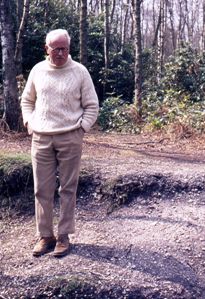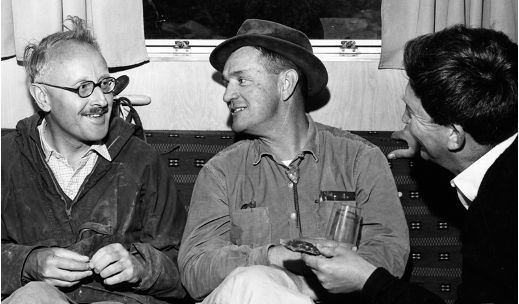Richard William Hey 1917-2011
Quaternary geologist and geomorphologist who quietly inspired students and colleagues at Cambridge for over 30 years
 Picture: Richard Hey standing on gravels of the high-level ancestral Thames, Hertfordshire (P L Gibbard)
Picture: Richard Hey standing on gravels of the high-level ancestral Thames, Hertfordshire (P L Gibbard)
Both Richard Hey’s parents came from families running successful manufacturing businesses in Yorkshire, but he was sent south to school. He always enjoyed returning to west Yorkshire, where he developed a taste for wild country, and the science of the natural world. At the age of 18, he went to Trinity College, Cambridge and read Natural Sciences. Such was the flexibility of the system that he was able to sample different science subjects before eventually specialising in Geology, and graduating in 1939. In Geology he was supervised by Maurice Black, one of the first university geologists in Britain to teach a wide range of research topics on sedimentary rocks.
World War Two then took centre stage, and Richard joined the Royal Air Force and was trained in aerial photograph interpretation. For much of the war he worked widely across North Africa, before landing in southern France and continuing up into Germany. This gave him a life-long feel for geomorphology, particularly of deserts, rivers and coasts.
After the War, Richard became involved with geomorphological, and archaeological research in North Africa, particularly in Libya, and in 1951 Cambridge awarded him the degree of PhD. The Head of the Geology Department in Cambridge at that time was Professor W B R (Bill) King who had been carrying out war-related geological work on landscapes, the geology of the English Channel, and even the properties of the Normandy beaches. Richard Hey was appointed to the first of a succession of teaching posts that continued until his retirement in 1982, on the basis of his Quaternary interests and his teaching flare.
Lecturing, running practical classes, and leading student field trips were the main activities of a conscientious holder of a teaching post in those days, and research was generally regarded as a secondary, somewhat personal, matter. Richard’s lecturing on Quaternary problems and sedimentary rocks was enjoyed by his student audience because of its clarity and gently humorous asides. He clearly enjoyed unhurried discussions with students during practical classes, and was marvellous company in the field, where he took a succession of memorable day trips around the English Midlands and East Anglia during the summers. In March and April, for many years, he also relished the joint leadership of a 10-day trip to south west Wales.
All this time his national and international standing in Quaternary Geology was developing, particularly in the world of Mediterranean coastal studies, where he undertook a monitoring role in many conferences. He also made key advances in the study of the history of British rivers particularly the River Thames, involving widespread field sampling for the heavy mineral and pebble lithologies that indicated provenance. 
Richard never married, and devoted much time and effort on his students and the life of the new Churchill College which he helped to set up and develop after his early days in Trinity College. At weekends, he would relax by making sorties into the countryside around Cambridge on the horse that he kept near College. In addition to his scientific work, he devoted himself to the playing and enjoyment of music, and the fine-art and religious life of the College.
By Peter Friend